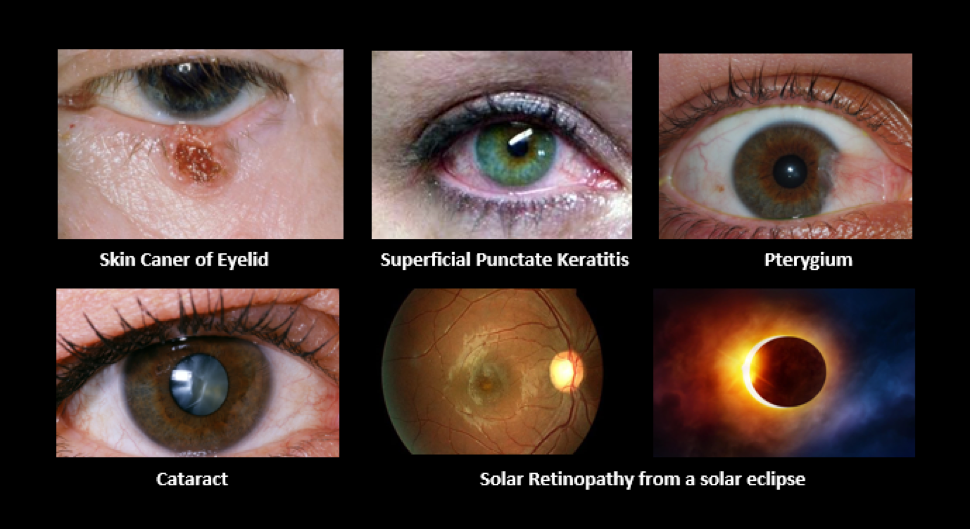Greetings everyone! This is Dr. Langston from The Eye Center and today I want to share with you an eye care provider’s perspective on sunglasses.
A common question that we’re asked by patients is “What are things that I should do to keep my eyes healthy for the long run?” Almost all of us would agree that three of the healthiest things persons can do for their eyes are – avoid smoking, eat a vegetable-rich diet, and wear lenses that protect your eyes from ultraviolet (UV) light. Protection from UV light is where sunglasses come in.
The reds, blues, and greens that we see all around us are the visible part of the electromagnetic spectrum. UV light can’t be seen, but its high energy is damaging to the eyelids, conjunctiva, cornea, lens, and retina, as seen pictured in the images below.
Sunglasses offer some protection to all these tissues of the eye. What follows are more specific examples of these benefits.
Sunglasses provide environmental protections from rain, snow, blowing sand or dust, and last but not least, protection from impact. These are big concerns for motorcyclists, bicyclists, and other outdoor recreation enthusiasts. More than a few military, police, and first responders owe their sight to impact protections more substantial than anything most of us have encountered.
Even on moderately cloudy days, outdoor light is considerably brighter than what we typically encounter indoors. Here, Sunglasses reduce glare, improve image quality, and benefit patients in recovery from surgery, wounds, or inflammatory eye disease such as dry eye. Polarized lenses are fantastic for glare reduction. They’re also a favorite of fishermen for their enhancement of viewing into water.
For some final thoughts on sunglasses – NEVER buy sunglasses that do not specify UV protection. These are not commonly sold in the US but they may occasionally show up as “Ray Bon” (not to be confused with the quality Bausch and Lomb “Ray-Ban” sunglasses) or “Oaklie” (in place of “Oakley”). The price often gives these ploys away. Quality UV protective lenses rarely sell for three to five dollars.
With regard to pricing, you definitely do not have to spend hundreds of dollars on good sunglasses. Inexpensive sunglasses often provide adequate UV protection, however, but may be short on impact resistance or frame durability. They also may be adequate as a backup pair for people who frequently misplace their glasses.
Saving the best for last, my wife reminds me that the most important consideration is that sunglasses make you look cool. She should know – I think she has a pair for every day of the month… UV and safety protecting of course.












